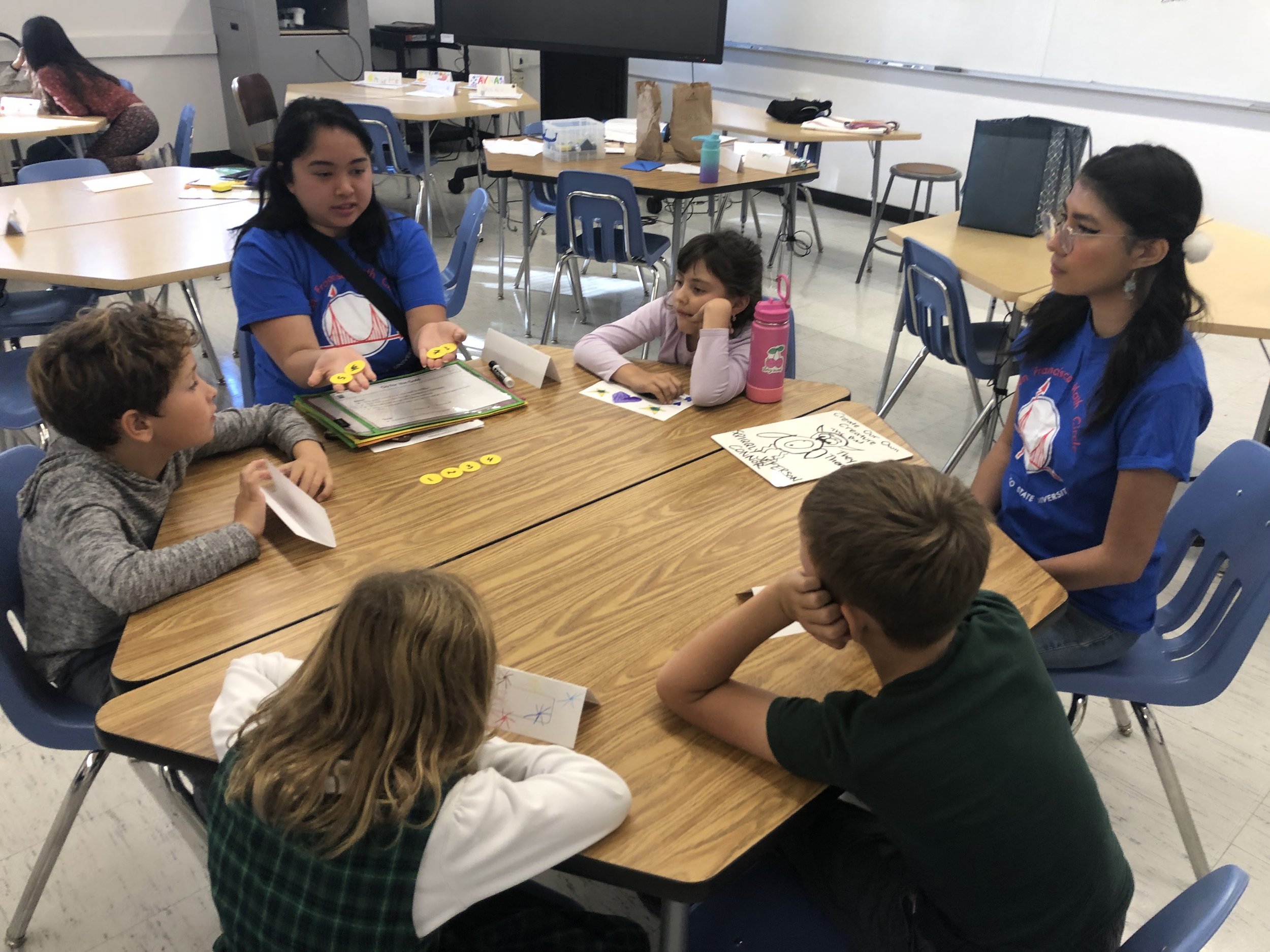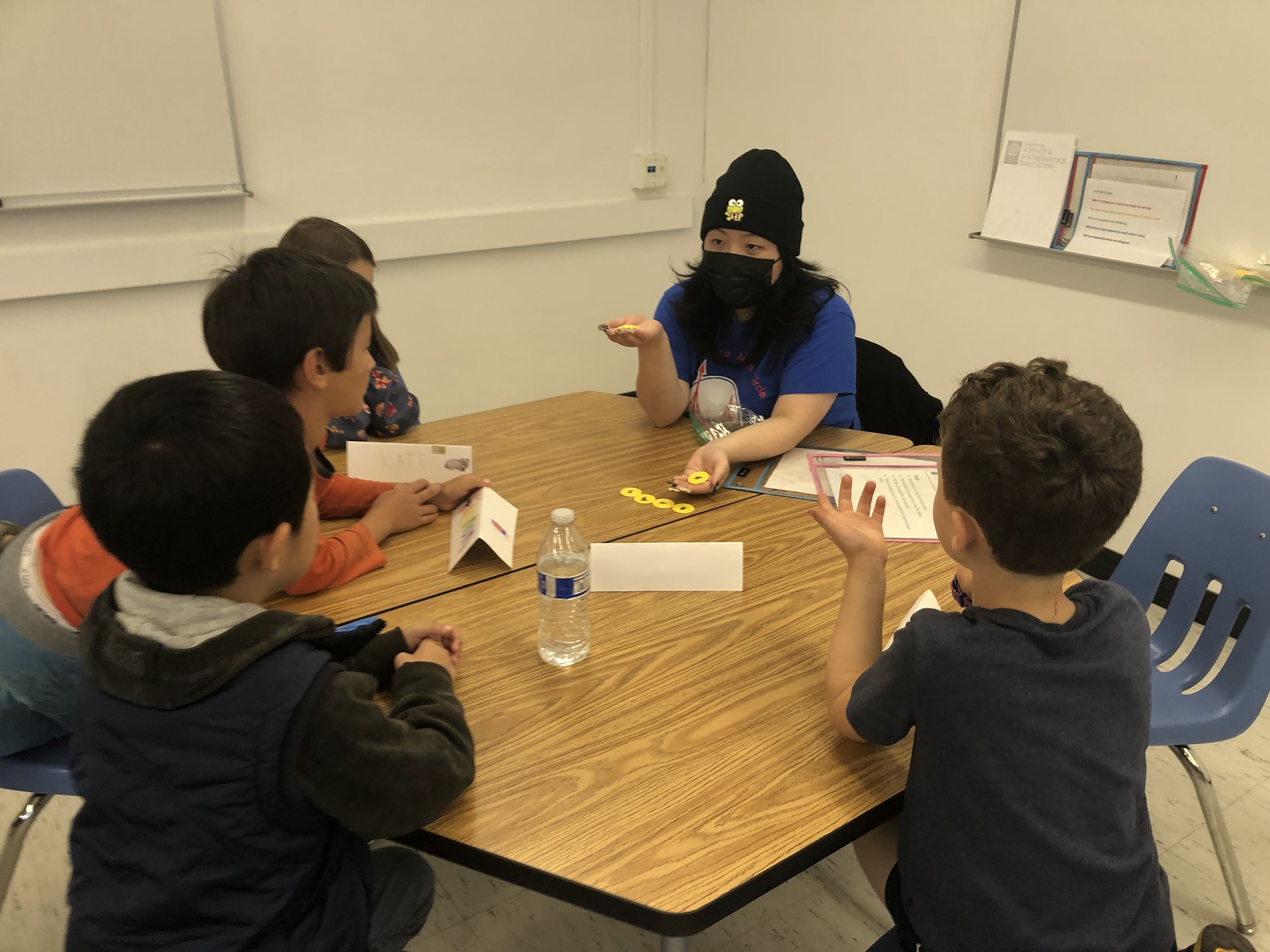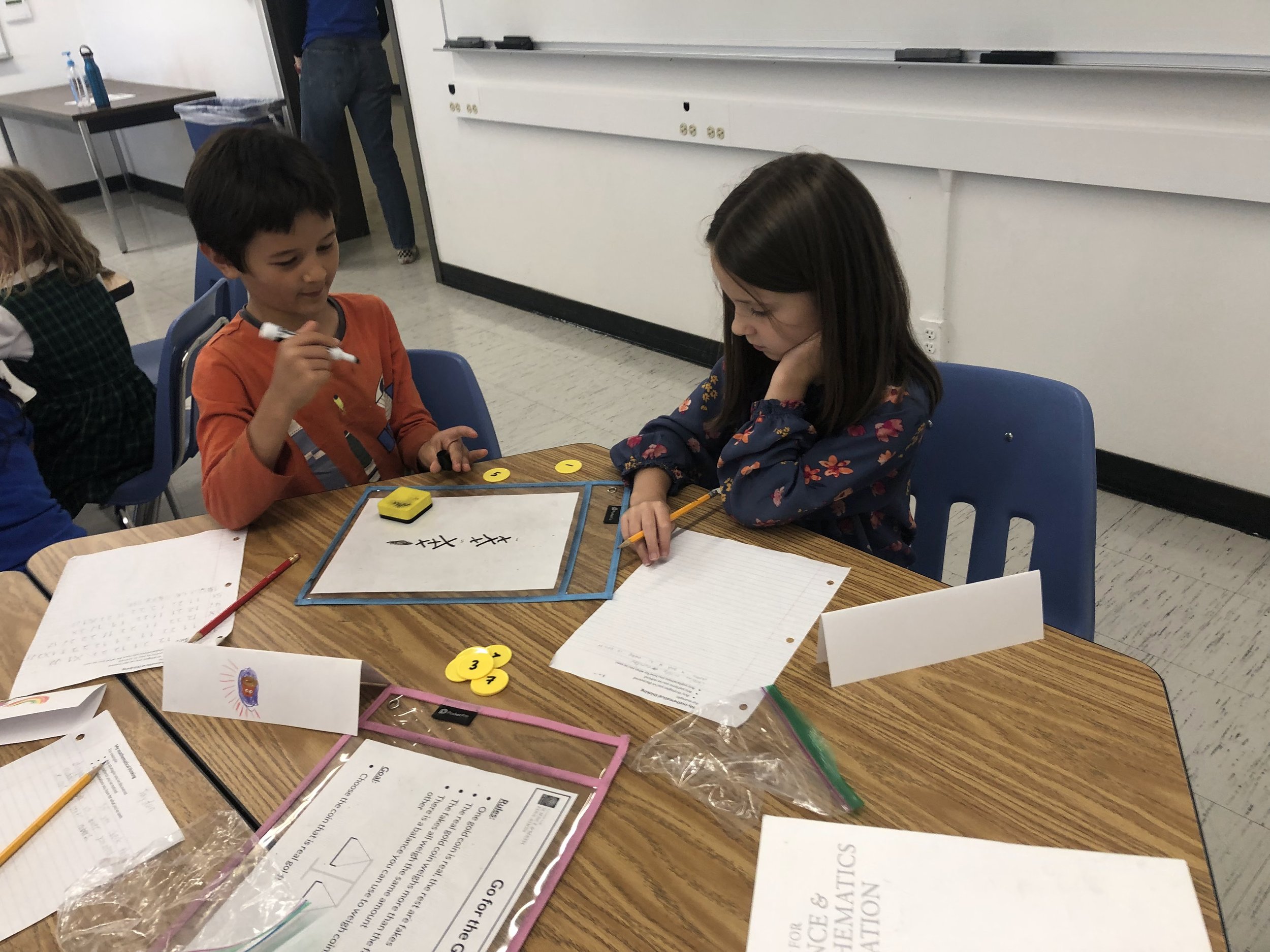Go for the Gold
How it works
Imagine there are 8 coins: One is made of gold, and the other 7 are fakes. You get to choose one coin, and your goal is to choose the real gold coin. The coins all look the same, but the real gold coin is heavier than all the fakes, and we have a balance with two trays that you can use to weigh coins against each other. Can you use the balance to help you choose the real gold coin? (It might also be useful to know that the fakes all weigh the same amount.) Can you find a strategy that you can use to choose the real gold coin every time if you're only allowed to do 3 weighings before you have to choose a coin? What if you are only allowed to do 2 weighings? What if there are 9 coins? 10 coins? More than 10 coins?
In this activity, students work together to try to choose the real gold coin when playing against a facilitator. To start, there are 8 coins and they're allowed to do 3 weighings, and their goal is to find a strategy they can use to guarantee they can choose the real gold coin every time. When they're able to do this, they try to do the same thing when they're only allowed to do 2 weighings. Then they explore other numbers of coins and try to figure out the minimum number of weighings they need to be allowed to do in order to guarantee they can choose the real gold coin every time.
Why we like this activity
- It’s fun! Students enjoy playing the game and figuring out how to beat the facilitator.
- It helps students develop algorithmic reasoning.
- It helps students develop numerical reasoning.
It requires students to engage in mathematical habits of mind:
- Using logic to figure out which coin is the real gold coin based on the results of the weighings.
- Finding and using strategies that allow you to guarantee you can find the real gold coin every time without without doing more than a given number of weighings.
- Looking for patterns and making and testing predictions when exploring how many weighings you need to be allowed to do for different numbers of coins.
- It has a low floor and a high ceiling: Students can start playing by trial and error, but figuring out which coins to weigh against each other so you're able to guarantee you can choose the real gold coin when you only have a limited number of weighings is more challenging!
This activity was developed in collaboration with the Julia Robinson Mathematics Festival.








